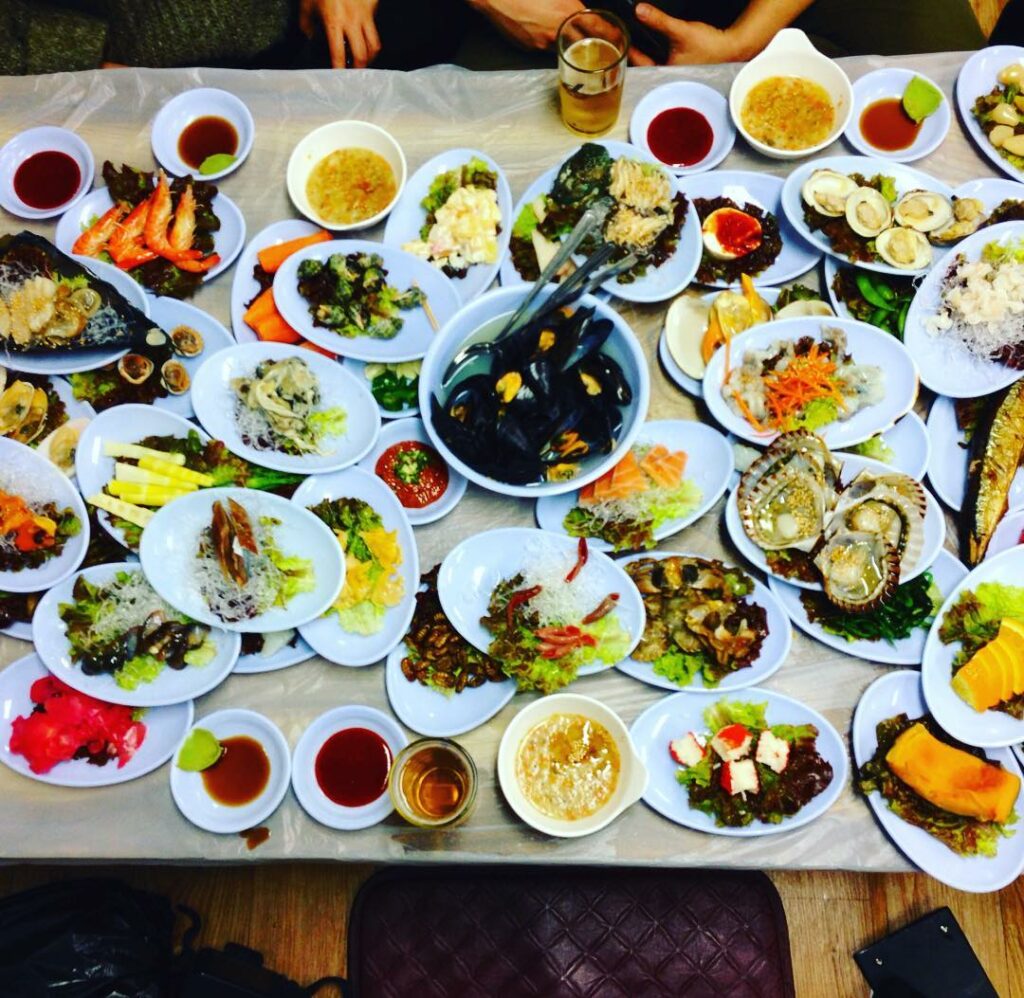
MAHLER’S 7TH AND MOVING SEAFOOD – THE 2016 SOUTH KOREA EXPERIENCE PART 2
PART 2: FOOD
My love for Taiwan, Japan, Hong Kong and South Korea and their wonderful people, culture, civilization and – last but not least – food, made it hard if not impossible to refuse the offer to go to South Korea. I took the chance to visit my “brother” Jay (Bae Jae-Hyuk), who, after studying trumpet with my father, managed to win the audition for principal trumpet of the Bucheon Symphony Orchestra just weeks after being obliged to two years of compulsory army service, getting to practice trumpet very little or almost nothing.
We would have dinner together every day, and thanks to him, and to the Seoul Phil’s tutti trumpet, Niels Heidø, I had some deep insight into local cuisine, and types of food. Seafood in all shapes and textures, mainly eaten raw and sometimes still moving, is a great chapter in Korean cuisine. Anything edible from under the Seas will come on the table, sometimes requiring a certain amount of flexibility and trust, even from a seafood junkie like me. Sea snails, “sea penis” (a big, pink, very primal sea worm), “sea squirt” (a bright yellow slimy shallow water animal), white fish sashimi, mussels, oysters and clams in all sizes, all get dipped in spicy sauce and eaten, offering a large array of textures (which, in Korea, Japan and Taiwan is at least as important as flavor), accompanied by with the never-missing raw garlic (healthy!), Kimchi fermented spicy cabbage (even healthier, delicious, and highly addictive), and salad or giant mint leaves in which to wrap the seafood. A spicy soup is made with the bones and heads of the fish, featuring an explosion of taste and a good amount of fresh greens.
Oh, and yes, there is the Korean rice wine, called Sochu. Lots of it. Koreans love drinking, often and abundantly. But always in a good round of people. Of all the great seafood experiences, a visit to the port of Incheon and the last dinner with Tuna sashimi and seafood purchased at the Seoul fish market and immediately cooked at a nearby restaurant were the most memorable.
An alternative to seafood can be found in the many barbecue restaurants where fine and less refined cuts of pork or beef are grilled by the guests themselves, on a charcoal grill in the middle of the table. Delicious, but not to exaggerate with. These places are often those with the longest opening times.
At lunch, there is nothing like one of the many varieties of Bibimbap, rice mixed with fresh veggies, possibly some meat, an egg yolk and spicy sauce, accompanied by a miso-like soup, kimchi, other pickles and possibly some tofu. One of the best lunches was in a little, well-hidden, restaurant in an underground food court next to the Sejong Center for the Performing Arts. It offers countryside-stile cuisine with simple but delicious ingredients cooked by a middle-aged man who has been running the place for decades.
Really, the food options in Seoul are endless and the Korean food culture is immensely varied. Like the most advanced food universes such as the ones in Italy, Turkey, Spain, Japan, Taiwan, South-East Asia and Australia, it can’t be assessed in just a week.
What is striking is that Korean cuisine uses virtually no wheat and no cheese thus being almost gluten-free and low-fat, provided you try to limit barbecue sessions and western food.